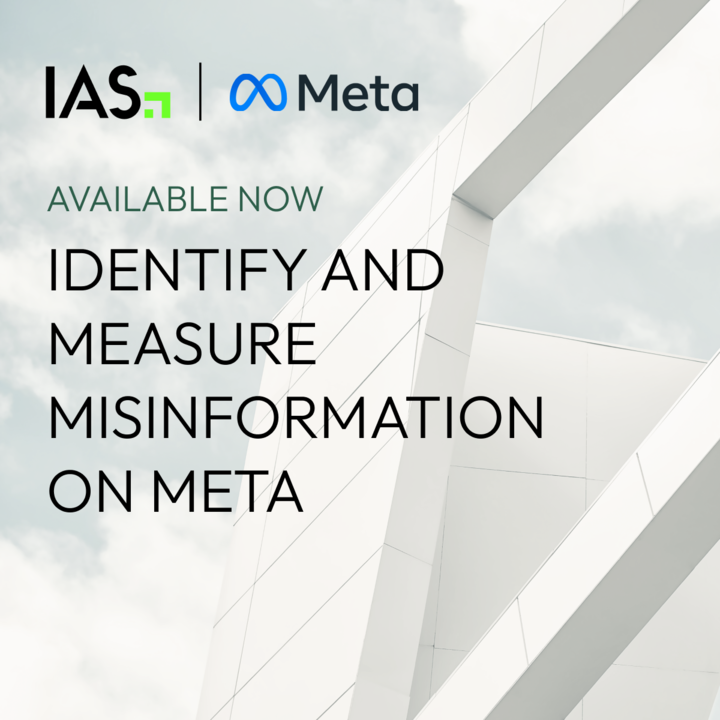Each January, IAS asks industry professionals to predict the advertising industry trends, challenges, and technologies that will define the upcoming year. While digital media trends are always evolving, this year has witnessed incredible, unforeseen events and change. And, it’s only halfway over!
As we shift into H2, we’re looking back at the top 2020 Industry Pulse findings to see which predictions have—or have not—come true.
Takeaway 1: Data privacy and contextual targeting remain key
Almost half (44%) of U.S. respondents predicted that increased data privacy legislation would be the top digital media challenge. The January introduction of the California Consumer Privacy Act (CCPA) marked the beginning of evolving legislation and restrictions. As a result, marketers realized that they would need to modify their methods to effectively reach consumers. Specifically, 82% of respondents selected contextual targeting as their preferred method in a more regulatory world.
So, did this prediction come true? Yes.
In the industry…
The introduction of new privacy legislation (i.e. GDPR, CCPA) is also influencing the potential deprecation of cookies. Consequently, advertising industry trends across the globe are accelerating the shift away from cookie usage. For example, increased connected TV adoption, which doesn’t use cookies, takes attention and users away from the platforms that do.
According to consumers…
In May, IAS released “Data Privacy and Contextual Advertising,” exploring consumer perception of data usage and privacy in advertising.
- 89% said online privacy is very important/important to them when browsing online content
- 88% are aware that websites and apps collect and share their data for advertising purposes
- More than half of consumers have taken action to help limit data collection when they are online
However, consumers aren’t opposed to seeing tailored ads. Most importantly, we found consumers prefer one digital ad experience above all others: contextual targeting. This is a win-win for advertisers adapting to increased privacy legislation. Contextual targeting isn’t just a solution for new challenges, it’s what consumers prefer.
Takeaway 2: Mobile, digital video, and social media are top priorities
When asked, industry professionals declared the following top 2020 priorities:
- Mobile – 82%
- Digital video – 78%
- Social media – 70%
So, did this prediction come true? Kind of.
In the industry…
The coronavirus pandemic and its impact has created an unpredictable strain on consumers around the world. Meanwhile, the advertising industry has struggled to adapt to the circumstances while still reaching consumers in a thoughtful, appropriate way. As a result, digital ad spend has slowed immensely, with a reported $85M+ decrease from March to June. Still, experts project the total 2020 digital ad spend will increase 1.7% compared to 2019. This upward trend is consistent across the top priorities: mobile, digital video, and social media are all expected to grow.
According to consumers…
Despite contracted ad budgets and slowed growth, advertisers’ top priorities remain aligned with digital trends. Consumer time spent across each category is increasing, especially given how much time we’re spending at home. In other words, consumer attention is ready and waiting.
Takeaway 3: The continued growth of connected TV
A rising star of the 2020 Industry Pulse, connected TV (CTV) was the fourth-highest priority of industry professionals. Together, CTV and OTT were listed as the Top Industry Trend, with 9 in 10 respondents selecting the pair. Simply put, connected TV was expected to continue winning the hearts of U.S. viewers this year and beyond.
So, did this prediction come true? Yes.
In the industry…
In 2020, connected TV growth was unlikely to falter, but unforeseen stay-at-home circumstances have catapulted adoption beyond expectations. On average, U.S. consumers are watching more than an hour of subscription OTT video every day. According to eMarketer, this represents a 23% increase in time spent streaming OTT video compared to 2019. At the same time, more than a third of U.S. consumers admit to watching at least two hours of TV or streaming video daily.
According to consumers…
The data shows it and consumers agree: CTV is the hottest advertising industry trend of the year. In April, IAS released “Streaming Wars 2,” which reported that 90% of consumers have access to a CTV device. Two-thirds of those consumers admitted that the coronavirus situation increased their streaming video consumption. Most importantly, 63% of consumers selected CTV as their preferred device for streaming video. Advertisers have noticed: eMarketer projects a 25.2% increase in CTV ad spend for 2020. That’s a larger increase than any of the original top three priorities will experience.
What’s next for 2020
Despite facing a global pandemic, contracted ad budgets, and rapidly evolving landscape, all three Industry Pulse key takeaways came true. So what’s next?
Context is the new focus for 2020. All impressions are not created equal—that’s where brand suitability comes in. It’s not enough to protect your brand from universally negative, harmful environments. IAS research shows that ads in brand suitable environments generate 20% more engagement. In today’s rapidly changing world, content is created at unprecedented rates, making it challenging to determine what’s suitable. IAS is the only company that can offer tailored, brand-specific protection that detects the context, sentiment, and emotions of a page to precisely and accurately classify content.
Effective marketers know that decoding the sentiment and context of content is key to connecting with the ideal audience. Learn more about Brand Safety and Suitability at IAS.
 Share on LinkedIn
Share on LinkedIn Share on X
Share on X


